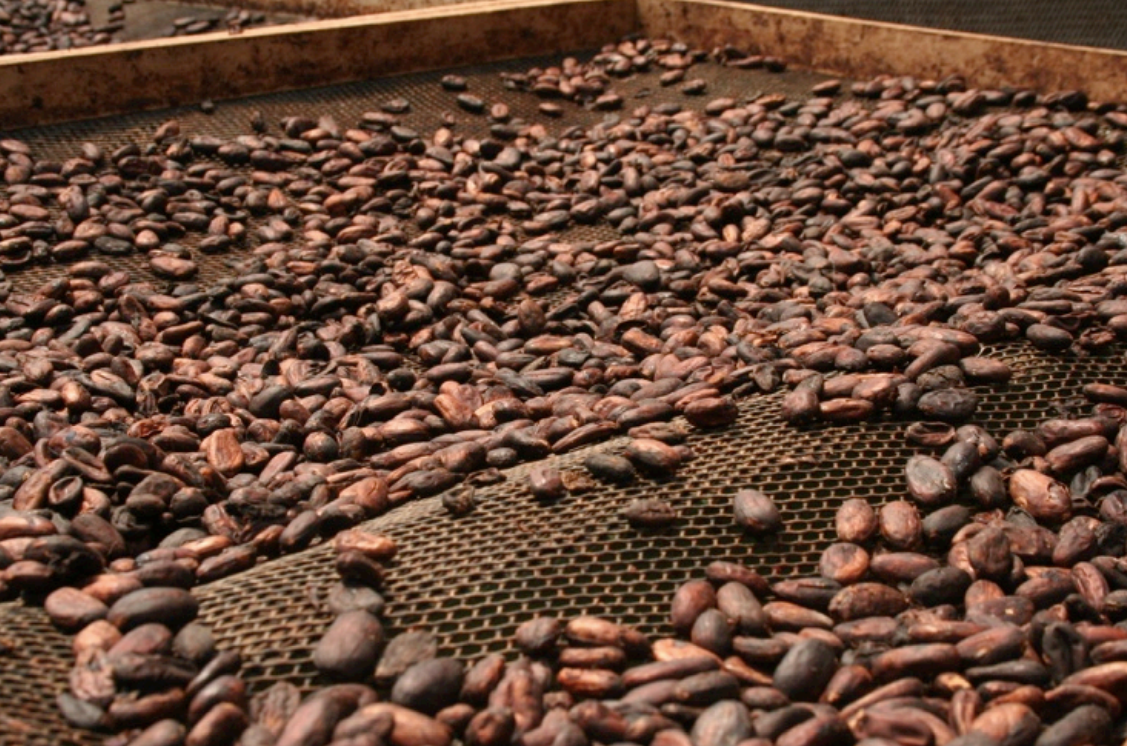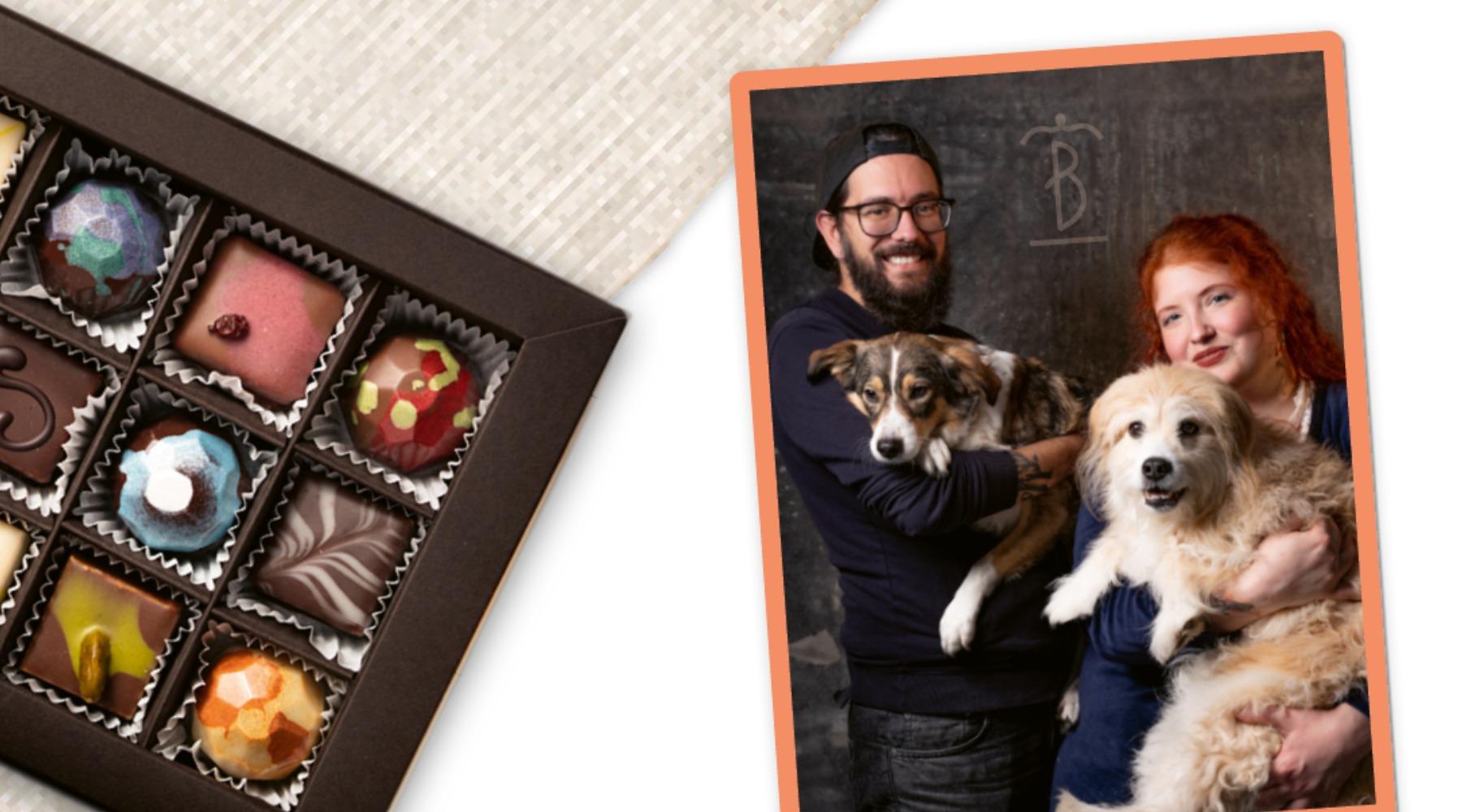Good chocolate is different. Different in terms of ingredients, quantities, processes and values. Solvejg Klein is the head of her own chocolate factory, the Amber Room , and is looking for exactly that “different”. Even if it presents them with challenges that they would not have to overcome with conventional industrial chocolate. What are the challenges, why "good chocolate" anyway - or because of it? - is so great, and where the differences to conventional chocolate from the supermarket are, you will find out in this article.
Curious how Solvejg made chocolate her profession? Here is the detailed interview .  Solvejg from 'The Amber Room' ©Solinger Tagblatt
Solvejg from 'The Amber Room' ©Solinger Tagblatt
Conventional chocolate vs. "good chocolate"
After craft beer, craft chocolate is now also enjoying increasing popularity. We like to call this craft chocolate just good chocolate. What distinguishes this "good" chocolate from conventional chocolate from large manufacturers?
manufacturing level
- Bulk vs. small batches: While large industrial companies produce chocolate in bulk, good chocolate is made in small batches. It is usually not found on supermarket shelves and is usually more expensive.
- Machines vs. manual work: Conventional chocolate from the supermarket is produced using large machines. Small craft chocolate makers, on the other hand, rely on manual work and small machines, some of which they build themselves.
- Fairness and transparency: Unfortunately, the exploitation of people and the environment is still a reality in the chocolate industry. The craft chocolate movement wants to change that: Personal relationships with farmers and producers and careful treatment of the environment and people are important to the makers ( you can find out more about the importance of biodiversity here ). They often accompany the manufacturing process of bean-to-bar chocolate, from the bean to the bar. In this way, they are in control of the quality of the chocolate and the conditions of its production at every step.
product level
- Cocoa beans: Mass-produced chocolate usually contains a mix of different cocoa beans from different origins. It is not clear - neither on the packaging nor through the taste - which varieties are in the chocolate. It's different with really good chocolate! In the best case scenario, you can already read on the packaging where the cocoa beans come from. Many bars are single origin, meaning they only contain cocoa beans from one growing region. Fine flavor cocoa varieties such as Criollo can also be found in the Craft Chocolate section. The transparency of many good chocolate manufacturers is not only great because as a consumer you know what you are eating. Exciting differences between cocoa types and regions can also be discovered in terms of taste.
- Additives: Industrially manufactured chocolate is usually of consistent quality. You know how it tastes and you can rely on this taste. In order to achieve this uniformity, additives such as emulsifiers are often used. These ensure that there are no fluctuations. This means that the cocoa mass, which is different by nature, can always be processed equally well. Good chocolate does not need emulsifiers. Instead, manual work and skill in handling the cocoa beans are required.
 Good chocolate - what does that mean? ©coffee master
Good chocolate - what does that mean? ©coffee masterChallenges for chocolate manufacture
Solvejg Klein has clear principles. In 2015 she opened the Amber Room, her own chocolate factory in Wuppertal. She relies on high-quality, plant-based ingredients such as craft chocolate and careful manual work. We visited her in her small chocolate factory. In conversation, we found out what challenges small chocolate manufacturers face that want to stand out from industrial mass-produced goods.“Cocoa is a flexible raw material,” explains Solvejg. “Processing non-industrial chocolate is challenging because it is not a one-size-fits-all post-processed product. Some batches melt wonderfully liquid, others have less fat and are melted more like pudding. But such fluctuations are quite natural. You have to be able to deal with that."
Instead of always using the same product that is easy to process due to machine production and additives such as emulsifiers, Solvejg embarks on the natural variations of craft chocolate. For example, she varies the amount of cocoa butter added to make the mass smoother.
But the difficulties for the praline manufacturer start even before processing: when purchasing. “Big companies sometimes pay quite a lot of money for chocolatiers to use their chocolate. That sounds like a good deal, especially when you're just starting out. The really good chocolates, on the other hand, cost a multiple, especially for small purchase quantities. This raises the question: What moral values do I represent? How big and famous do I want to be and how fast do I want to grow? What are my rights?"
For Solvejg it was clear from the start: if chocolate, then really good, fair and vegan. You can now find out why processing craft chocolate is so worthwhile.
 Good cocoa beans for good chocolate ©Uncommon Cacao
Good cocoa beans for good chocolate ©Uncommon CacaoWhy good chocolate is really good
That good chocolate is worthwhile from an ethical point of view is obvious for Solvejg and also for us at Theyo. Because of our deep admiration for the cocoa plant and the diversity of chocolate as a product, it goes without saying that everyone involved in the process must be treated fairly. On the one hand, the transparency in the craft chocolate industry ensures this fairness. On the other hand, knowledge about the origin and manufacturing process of chocolate enables more conscious consumption.For Solvejg vom Bernsteinzimmer, in addition to the values of the company, the quality of taste is of course what counts. According to her, "I can't improve the chocolate world if I don't use good chocolate for my chocolates!" We can only agree.
Most praline manufacturers only have one dark, one light and one white chocolate in their portfolio. Her main focus is on the fillings. For Solvejg, the shell is also extremely important. "You can have the greatest filling in the world," she says. “In the end, the chocolate usually stays in your mouth. If it's not good, it pulls the whole praline down. The chocolate has to be part of the overall praline concept.”
When she first tried very high-quality bean-to-bar chocolate, she was amazed at the flavors that chocolate can contain. She brings this aromatic extension of horizons to her pralines.
Really high-quality craft chocolate is a tasty wow effect - pure or processed into a praline. It doesn't always taste and melt the same. Different types of cocoa, growing countries and processing methods can be discovered and tasted.
Let's eat better chocolate and make the chocolate industry a better place!
 Fine pralines made from good, vegan chocolate from the Bernsteinzimmer ©The Amber Room
Fine pralines made from good, vegan chocolate from the Bernsteinzimmer ©The Amber RoomPlea for good chocolate
More and more people are rethinking their consumption and questioning, for example, under what conditions the chocolate they enjoy was made. At this year's Eurobean Festival we were able to experience for ourselves what a huge rush there is for handmade "good" chocolate from small manufacturers - even if it is not found in every supermarket and processing is more challenging than that of industrial chocolate. The trend towards good chocolate is clearly noticeable. To chocolate that tells a story, as opposed to industrial mass-produced goods from the supermarket shelf. We at Theyo think that's great!So: spread the word – and be sure to try the wonderful pralines from the small chocolate factory. You can get the small works of art, for example, in our shop, online at the Amber Room and in selected shops . Here you can find out how Solveijg Klein became the boss of her own chocolate factory and why all her pralines are vegan.
Looking for even more good, fair chocolate? Then take a look at our online shop !



